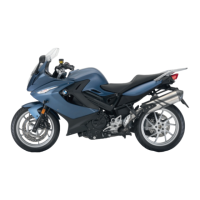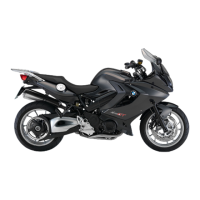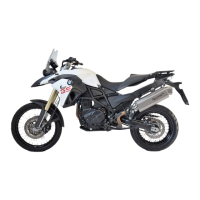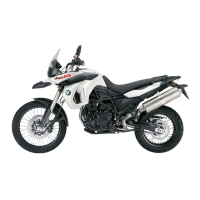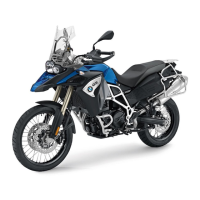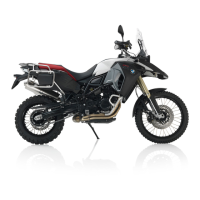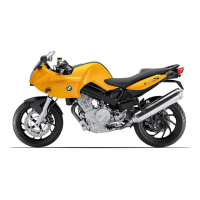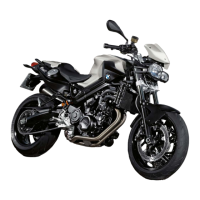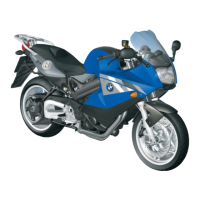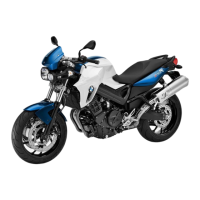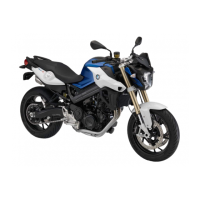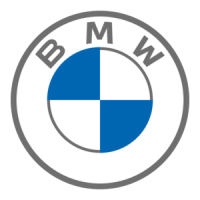cially developed for these kinds
of applications.
Brakes
How do you achieve
the shortest stopping
distances?
The dynamic load distribution be-
tween the front and rear wheel
changes during braking. The
heavier you brake, the greater
the weight transfer to the front
wheel. Increases in the load on
an individual wheel are accom-
panied by a rise in the effective
braking force that the wheel can
provide.
To achieve the shortest possi-
ble braking distance, the front
brake must be applied quickly
and with progressively greater
levels of force. This procedure
provides ideal exploitation of the
extra weight transfer to the front
wheel. The clutch should also
be disengaged at the same time.
With the frequently instructed
"forced braking," in which the
brake pressure is generated as
quickly as possible and with great
force, dynamic load distribution
lags behind the progressive in-
creases in deceleration rate and
the braking force cannot be com-
pletely transferred to the road
surface. The front wheel can lock
up.
Locking up of the front wheel
is prevented by BMW Motorrad
ABS.
Descending mountain
passes
WARNING
Braking only with the rear-
wheel brake when descend-
ing mountain passes
Reduced of braking action, de-
struction of the brakes caused by
overheating
Use both front and rear brakes,
and make use of the engine's
braking effect as well.
Wet, soiled brakes
Moisture and dirt on the brake
rotors and the brake pads result
in a decrease in the braking ac-
tion.
Delayed or poorer braking action
must be expected in the follow-
ing situations:
When driving in the rain and
through puddles.
After washing the vehicle.
When driving on roads spread
with salt.
After working on the brakes
due to oil or grease residues.
When driving on soiled roads
or offroad.
7
79
z
Riding
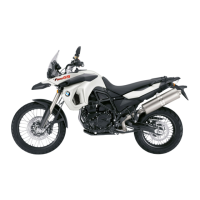
